#Han women’s clothing of the Qing Dynasty
Photo
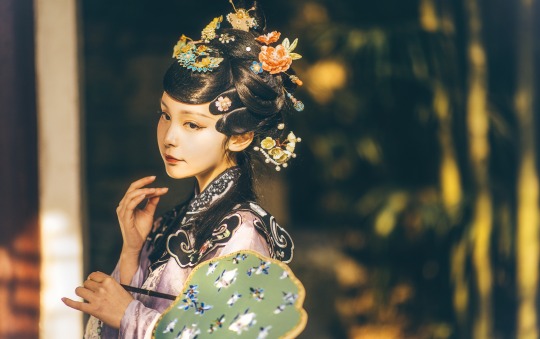

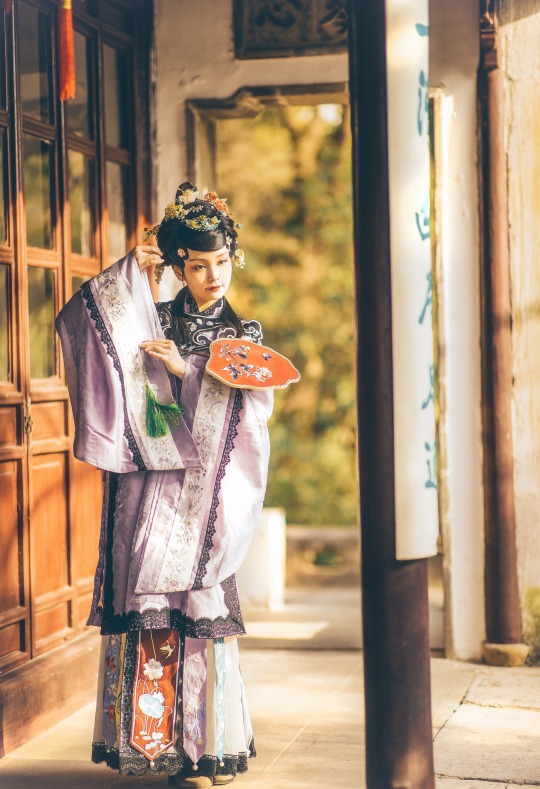

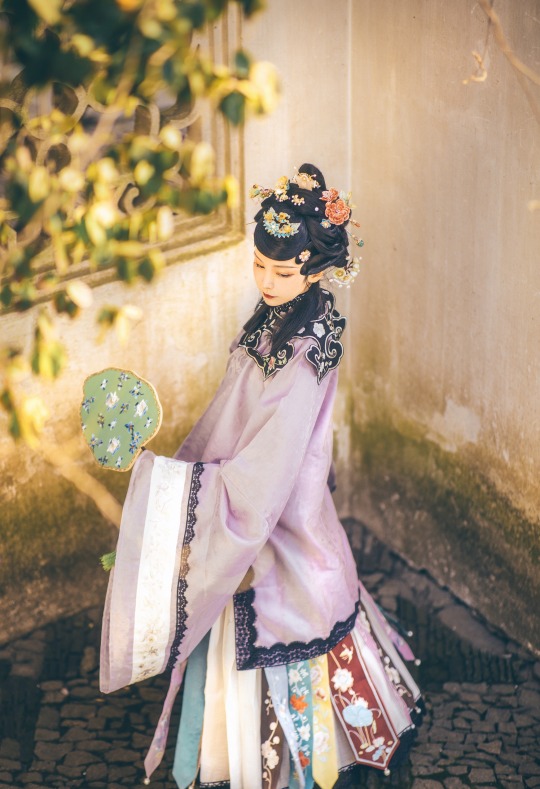
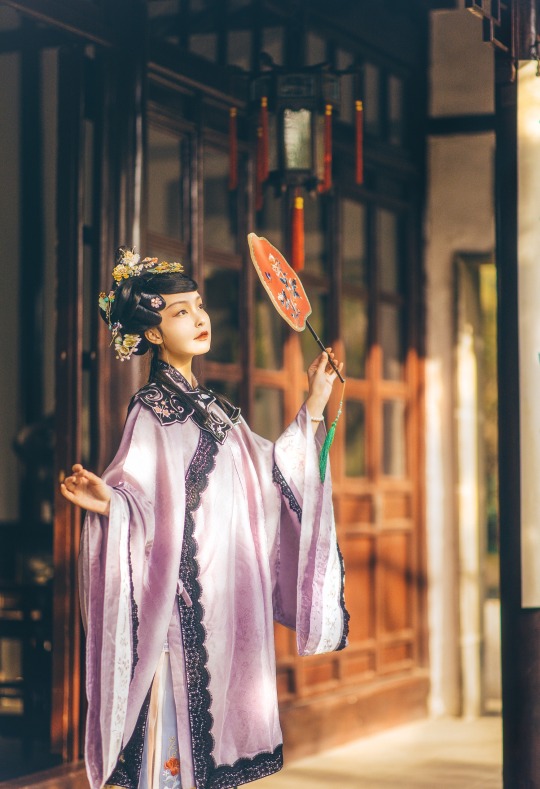

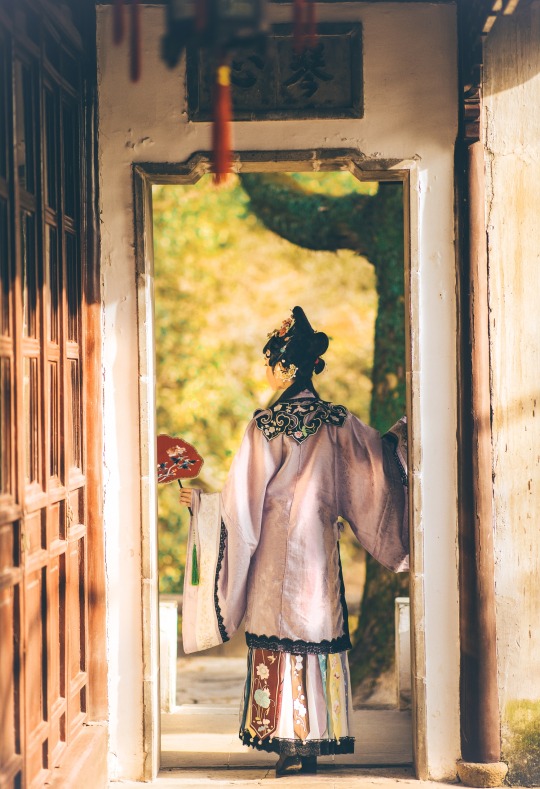

𝒮𝓊𝓃𝓃𝓎𝓊𝒻ℯ𝒾元気姬
#Qing Dynasty#Mamianqun#Qizhuang#Yunjian#Cloud collar#Han women’s clothing of the Qing Dynasty#Manchu Fashion#Chinese Fashion#Fashion
216 notes
·
View notes
Photo
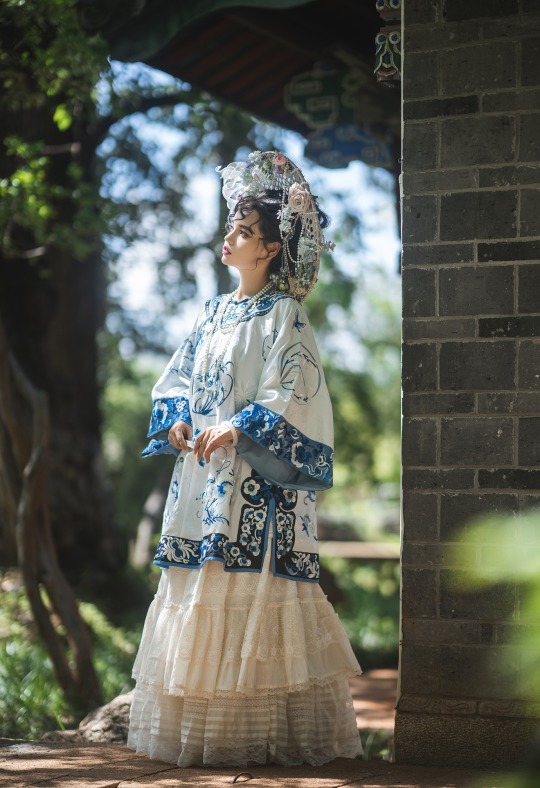




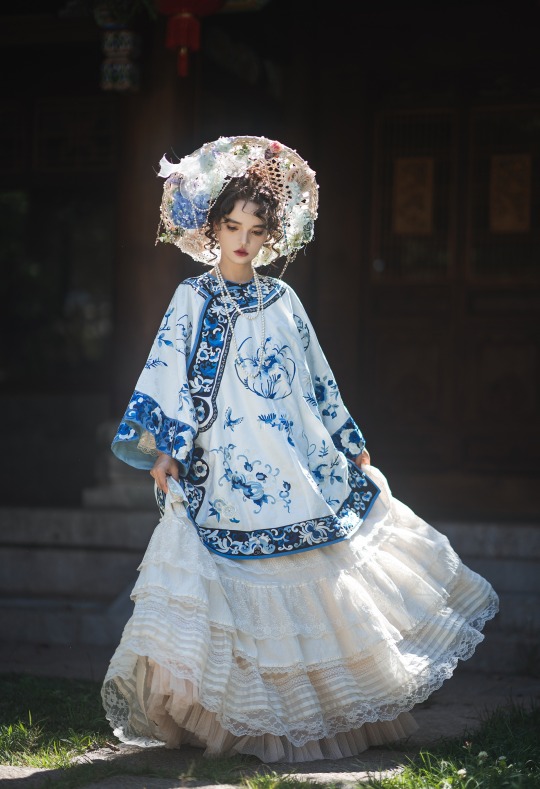
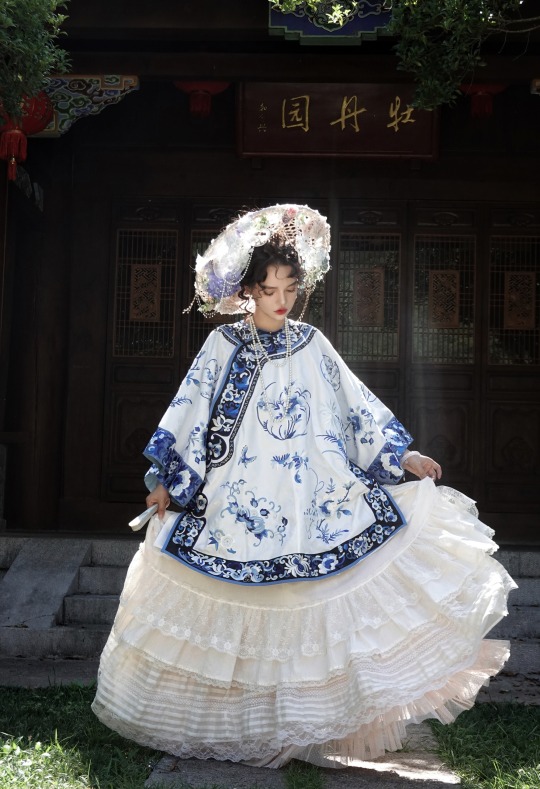

𝒬𝒾𝓏𝒽𝓊𝒶𝓃𝑔/旗装: 花神妙华服
𝑀𝑜𝒹𝑒𝓁: 肉肉馅团子
𝒞𝒶𝓂𝑒𝓇𝒶: 花轮子哥哥
𝑀𝒶𝓀𝑒𝓊𝓅: 蚊𝓌𝓌𝓌桑
150 notes
·
View notes
Text



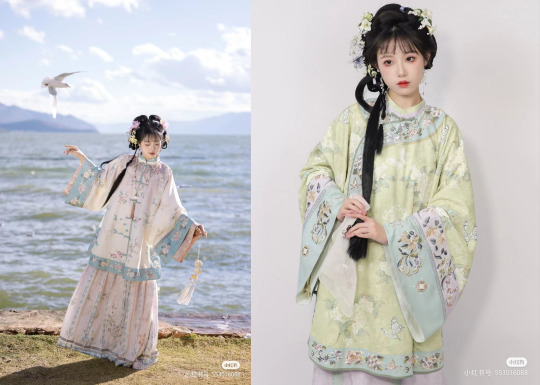
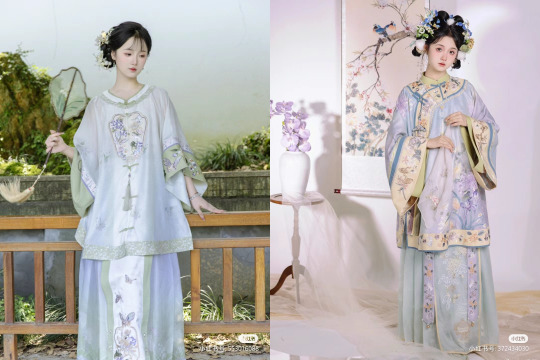
chinese fashion (genre: qinghannv, han women's clothing in qing dynasty)
#china#fashion#chinese fashion#bot asked a hanfu store designer about it and she thinks it's not technically hanfu#it really wasn't qizhuang either#and should be a separate category#so the tag hanfu is not included#i'm not professional about hanfu so#just sharing beautiful chinese clothing#qinghannv
294 notes
·
View notes
Note
Please can you explain the difference of meaning between hanfu and huafu ? Sorry if you already got the question
Hi, thanks for the question, and sorry for taking ages to reply! (hanfu photo via)
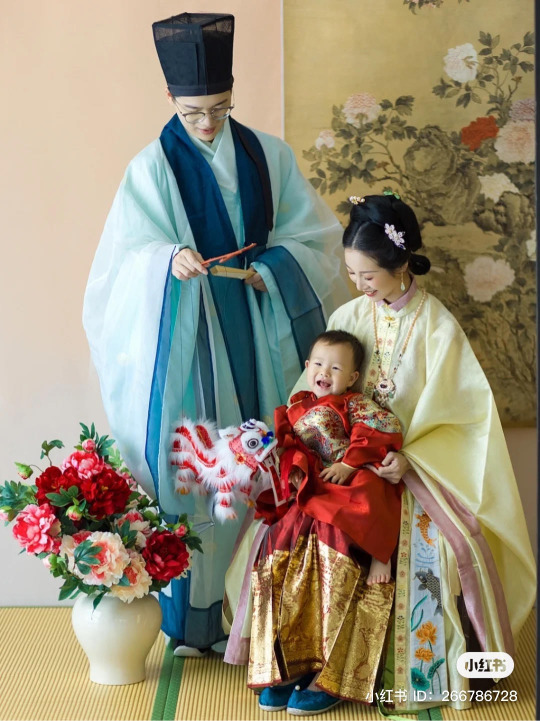
The term “hanfu” (traditional Chinese: 漢服, simplified Chinese: 汉服) literally means “Han clothing”, and refers to the traditional clothing of the Han Chinese people. “Han” (漢/汉) here refers to the Han Chinese ethnic group (not the Han dynasty), and “fu” (服) means “clothing”. As I explained in this post, the modern meaning of “hanfu” is defined by the hanfu revival movement and community. As such, there is a lot of gatekeeping by the community around what is or isn’t hanfu (based on historical circumstances, cultural influences, tailoring & construction, etc). This isn’t a bad thing - in fact, I think gatekeeping to a certain extent is helpful and necessary when it comes to reviving and defining historical/traditional clothing. However, this also led to the need for a similarly short, catchy term that would include all Chinese clothing that didn’t fit the modern definition of hanfu -- enter huafu.
The term “huafu” (traditional Chinese: 華服, simplified Chinese: 华服) as it is used today has a broader definition than hanfu. “Hua” (華/华) refers to the Chinese people (中华民族/zhonghua minzu), and again “fu” (服) means “clothing”. It is an umbrella term for all clothing that is related to Chinese history and/or culture. Thus all hanfu is huafu, but not all huafu is hanfu. Below are examples of Chinese clothing that are generally not considered hanfu by the hanfu community for various reasons, but are considered huafu:
1. Most fashions that originated during the Qing dynasty (1644–1911), especially late Qing, including the Qing aoqun & aoku for women, and the Qing changshan and magua for men. I wrote about whether Qing dynasty clothing can be considered hanfu here. Tangzhuang, which is an updated form of the Qing magua popularized in 2001, can also fit into this category. Below - garments in the style of Han women’s clothing during the Qing dynasty (清汉女装) from 秦綿衣莊 (1, 2).
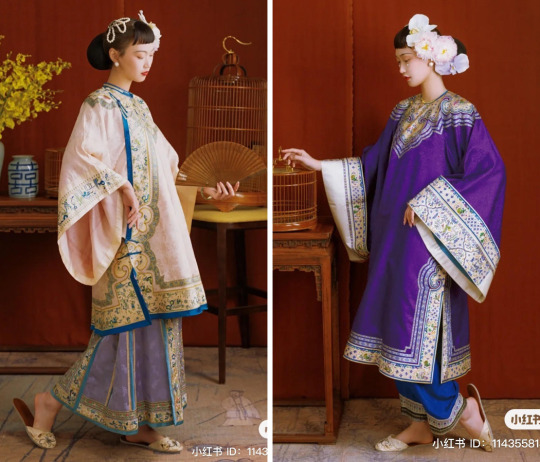
2. Fashions that originated during the Republican era/minguo (1912-1949), including the minguo aoqun & aoku and qipao/cheongsam for women, and the minguo changshan for men (the male equivalent of the women’s qipao). I wrote about why qipao isn’t considered hanfu here. Below - minguo aoqun (left) & qipao (right) from 嬉姷.

Below - Xiangsheng (crosstalk) performers Zhang Yunlei (left) & Guo Qilin (right) in minguo-style men’s changshan (x). Changshan is also known as changpao and dagua.
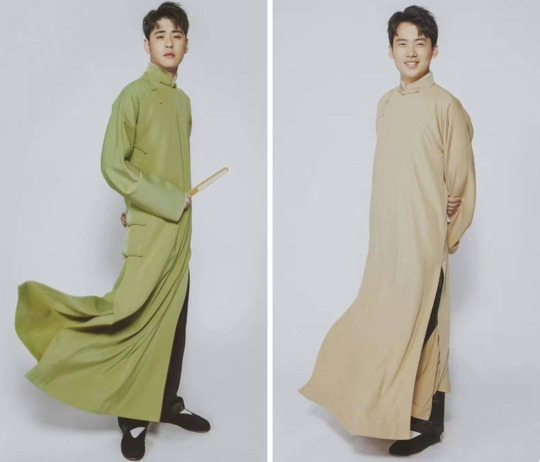
3. Qungua/裙褂 and xiuhefu/秀禾服, two types of Chinese wedding garments for brides that are commonly worn today. Qungua originated in the 18th century during the Qing dynasty, and xiuhefu is a modern recreation of Qing wedding dress popularized in 2001 (x). Below - left: qungua (x), right: xiuhefu (x).
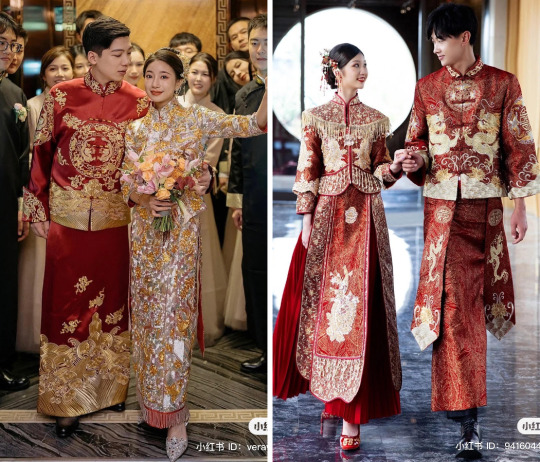
4. Modified hanfu (改良汉服/gailiang hanfu) and hanyuansu/汉元素 (hanfu-inspired fashion), which do not fit in the orthodox view of hanfu. Hanfu mixed with sartorial elements of other cultures also fit into this category (e.g. hanfu lolita). From the very start of the hanfu movement, there’s been debate between hanfu “traditionalists” and “reformists”, with most members being somewhere in the middle, and this discussion continues today. Below - hanyuansu outfits from 川黛 (left) and 远山乔 (right).

5. Performance costumes, such as Chinese opera costumes (戏服/xifu) and Chinese dance costumes. These costumes may or may not be considered hanfu depending on the specific style. Dance costumes, in particular, may have non-traditional alterations to make the garment easier to dance in. Dunhuang-style feitian (apsara) costumes, which I wrote about here, can also fit into this category. Below - left: Chinese opera costume (x), right: Chinese dance costume (x).
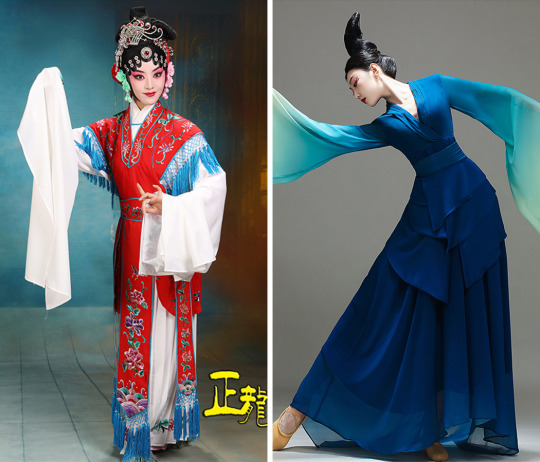
6. Period drama costumes and fantasy costumes in popular media (live-action & animation, games, etc.), commonly referred to as guzhuang/古装 (lit. “ancient costumes”). Chinese period drama costumes are of course based on hanfu, and may be considered hanfu if they are historically accurate enough. However, as I wrote about here, a lot of the time there are stylistic inaccuracies (some accidental, some intentional) that have become popularized and standardized over time (though this does seem to be improving in recent years). This is especially prevalent in the wuxia and xianxia genres. Similarly, animated shows & games often have characters dressed in “fantasy hanfu” that are essentially hanfu with stylistic modifications. Below - left: Princess Taiping in historical cdrama 大明宫词/Palace of Desire (x), right: Wei Wuxian and Lan Wangji in wuxia/xianxia cdrama 陈情令/The Untamed (x).

7. Any clothing in general that purposefully utilizes Chinese style elements (embroidery, fabrics, patterns, motifs, etc). Chinese fashion brand Heaven Gaia is a well-known example of this. Below - Chinese-inspired designs by Heaven Gaia (x).
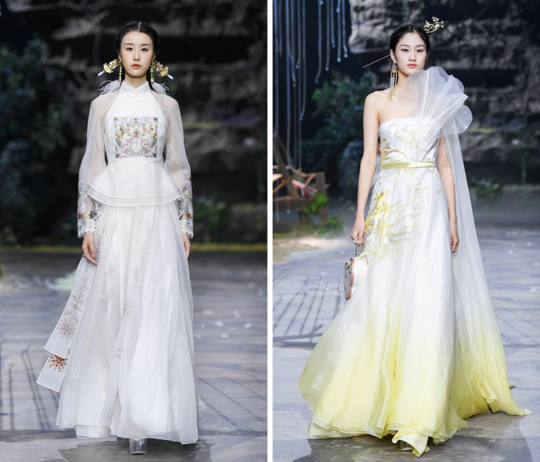
8. Technically, the clothing of China’s ethnic minorities also fit under the broad definition of huafu, but it’s rarely ever used in this way.
From personal observation, the term “huafu” is mainly used in the following situations:
1. Some large-scale events to promote Chinese clothing, such as the annual “华服日/Huafu Day”, will use “huafu” in their name for inclusivity.
2. For the same reason as above, Chinese clothing including hanfu will often be referred to as “huafu” on network television programs (ex: variety shows).
3. A few Chinese clothing shops on Taobao use “huafu” in their shop name. Two examples:
明镜华服/Mingjing Huafu - sells hanfu & hanyuansu.
花神妙华服/Huashenmiao Huafu - sells Qing dynasty-style clothing.
With the exception of the above, “huafu” is still very rarely used, especially compared to “hanfu”. It has such a broad definition that it’s just not needed in situations for which a more precise term already exists. However, I do think it’s useful as a short catch-all term for Chinese clothing that isn’t limited to the currently accepted definition of hanfu.
If anyone wants to add on or correct something, please feel free to do so! ^^
Hope this helps!
#happy 2023!#hanfu#huafu#terminology#language#hanfu movement#history#reference#ask#reply#>1000#chinese fashion#chinese culture#china
2K notes
·
View notes
Text
[Hanfu · 漢服]Chinese Song Dynasty (960–1279 AD)Traditional Clothing Hanfu Reference to Song Dynasty Sculpture


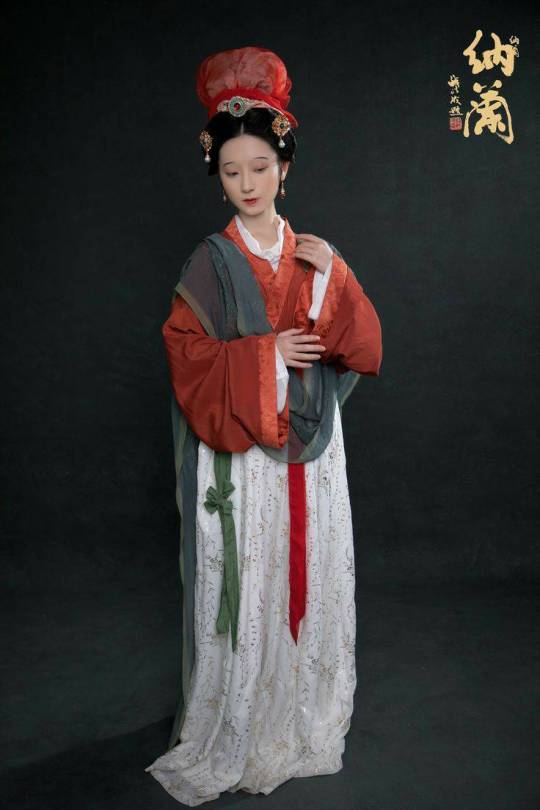

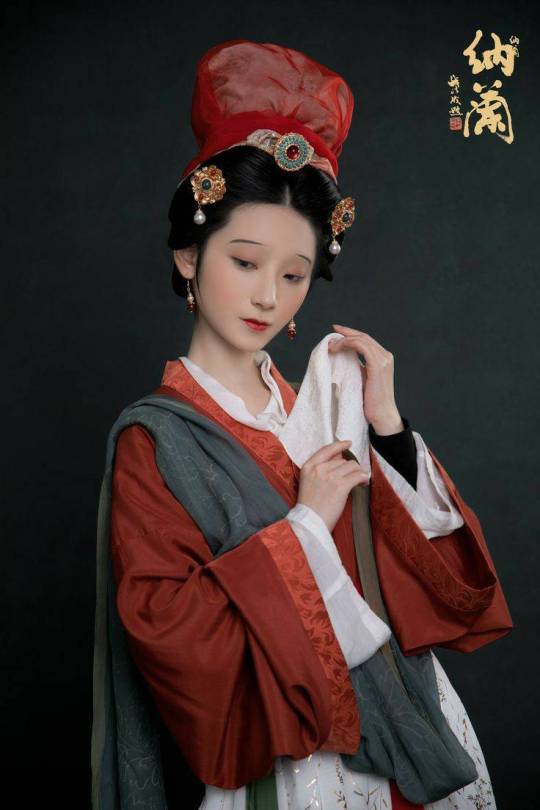
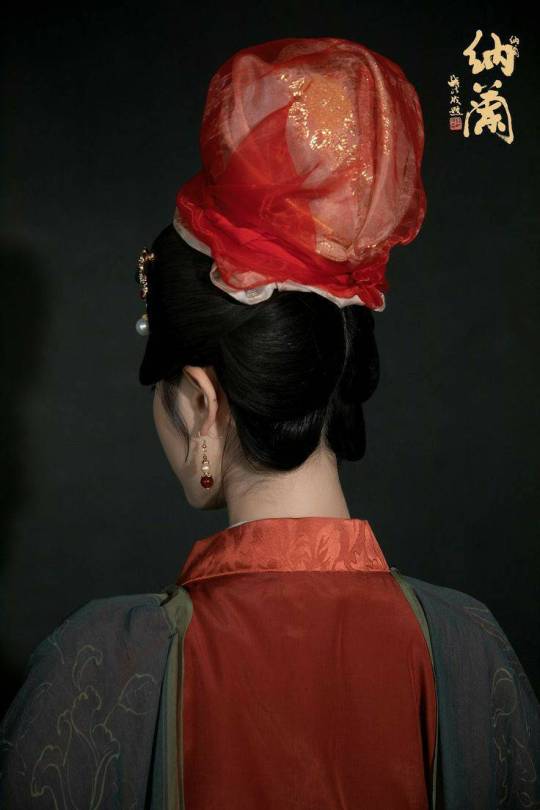
【Historical Reference Artifacts】:
China Song Dynasty Painted Sculpture from【Jin Temple】晋祠宋代彩塑
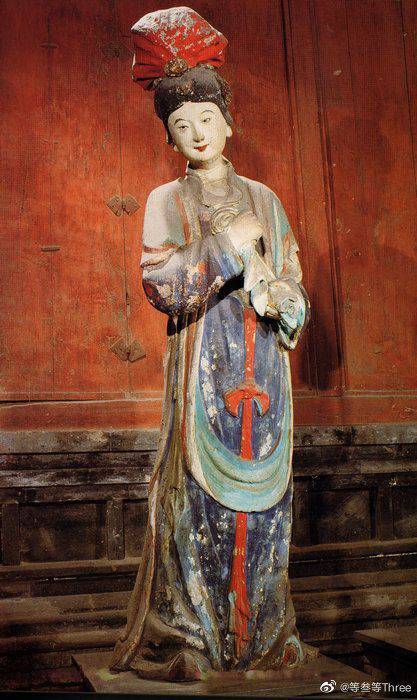
▶️【About Hairstyle“包髻/Bao Ji”】:
It is one of the hairstyles of ancient Han women.
包髻/Bao Ji is a hairstyles that use rectangular headscarf to cover the hair. When worn, it is folded diagonally, wrapped from the front to the back, and then wrapped around the corner of the scarf to the front of the forehead to tie a knot.
As early as the Tang Dynasty(618-907 AD), there was a prototype of this hairstyle, and it became popular in the Song Dynasty.
Women in the Ming Dynasty(1368-1644 AD) liked to use black gauze to make this hairstyle and this kind of hairstyle survived until the last dynasty of China: the Qing Dynasty.
#chinese hanfu#Song Dynasty (960–1279 AD)#hanfu#hanfu accessories#hanfu_challenge#chinese traditional clothing#china#chinese#chinese history'#chinese fashion history#chinese historical hairstyle#chinese art#漢服#汉服#中華風#包髻/Bao Ji#Jin Temple
208 notes
·
View notes
Text
Wearing 清漢女裝 - Common Han women's clothing from the Qing dynasty. The dance is a specialty of Chinese opera (水袖舞 - lit. water sleeve dance) and is named as such since actors' movements make the sleeves resemble flowing water. The long silk sleeves are used to express the character's emotions, requiring the coordination of the whole body to do so naturally and elegantly.
188 notes
·
View notes
Note
Hello, could you please do a review of Chinese Dress: From the Qing Dynasty to the Present Day by Valery Garett? Or at least give a perusal? It looks really good to a naked eye. There's clothes for different occasions, ethnic groups, and social classes. But it was also written by a white British woman, and from what I can tell her research comes from (stolen) collections in UK museums.
Also, I am confused about a passage on wedding dresses; she says Cantonese peasant women wore dark blue or black cotton for their weddings (pg 172), but I thought Chinese wedding dresses were traditionally red. (I am Chinese; I am an adoptee researching my culture; on a personal note, if it's true then I'm bummed because nobody deserves a boring wedding dress and red is so gorgeous)
Many thanks!
(Here's a pdf of the book for reference)
In my opinion, any book on Qing Dynasty fashion that uses a court dress laid flat as its cover image should be immediately dismissed, and that is exactly what I would say about this book. Unfortunately it's yet another ethnographic account coming from a white anthropological perspective, as you've identified, and is only useful if you want a caricature of your culture. Like most authors on Qing Dynasty fashion, Chinese or not, Garrett takes the 19th century as the starting date of the dynasty and offers absolutely no information on anything prior to that. This is because of both the lack of resources available to her from before western colonialism and the general framing of Qing Dynasty fashion; a common mistake, but not an excusable one. The erasure and misrepresentation of fashion in the PRC is disappointing. The book is from 2007 though, and it reads like other books from the same time, so it's not even bad in a unique way. I cannot stress this enough but please use recent literature wherever possible.
About the wedding dress thing, I wouldn't say there is one single 'traditional' color since formal wedding dresses of the Han upper classes during the Qing had multiple pieces and were not monochromatic. In the first half of the twentieth century, wedding qungua had a black jacket and red skirt, but were also embroidered with gold or silver. Blue and black were common colors for the working class in the 19th century, and it makes sense for peasant women to wear what was economical. Having fancy weddings that were a special occasion was, really, an aristocratic and bourgeois custom, and I assume working people often just couldn't be bothered.
This reminded me, I really should finish that series on Qing Dynasty Han women's fashion. Seeing published white authors be cringe with such audacity kind of motivates me.
80 notes
·
View notes
Text
Rare Portraits Depicting Hanfu Worn with Right Over Left Lapel Closing (左衽).

Thirteenth Ancestor Portrait from Portrait Album of Wu’s Ancestors 吳氏先祖容像十三. Ni Renji. Painted sometime between the late Ming Dynasty and early Qing Dynasty during the artist’s life (1607-1685). Yiwu Museum, Zhejiang, China [image source].
For the Han, the left lapel was considered Yang and the right one Yin and, thus, living people placed the left lapel over the right one to symbolize Yang (life) covering Yin (death). That’s why only dead people had their right lapel over their left. In the case of the dead, Yin (death; right lapel) overtook Yang (life; left lapel). Moreover, the left over right lapel (右衽) served as an ethnic distinction for the Han.
However, not all living Han people followed this tradition and there are documented cases of them wearing their hanfu with the right lapel over the left one.
There are exceptions in which living Han Chinese would wear clothing with a zuoren closure. For example, in some areas (such as Northern Hebei) in the 10th century, some ethnic Han Chinese could be found wearing left-lapel clothing. It was also common for the Han Chinese women to adopt left lapel under the reign of foreign nationalities, such as in the such as in the Yuan dynasty. The practice of wearing the zuoren also continued in some areas of the Ming dynasty despite being a Han Chinese-ruled dynasty which is an atypical feature.
Wikipedia, Garment collars in Hanfu
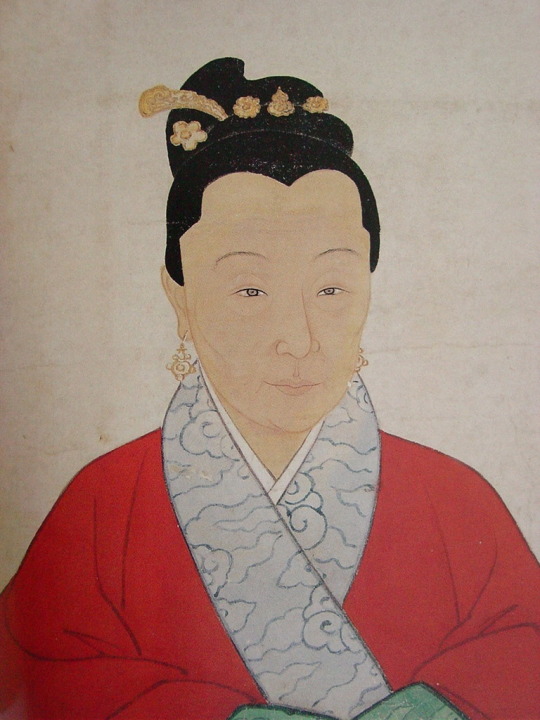
Fifth Ancestor Portrait from Portrait Album of Wu’s Ancestors 吳氏先祖容像五. Ni Renji. Painted sometime between the late Ming Dynasty and early Qing Dynasty during the artist’s life (1607-1685). Yiwu Museum, Zhejiang, China [image source].
Other non-Han ethnicities, such as the Khitans and Xianbei, would preserve their 左衽 tradition even after adopting hanfu. It’s possible for these women (and its mostly women wearing hanfu depicted with 左衽) to be non-Han in origin or are Han but came from areas where 左衽 was still practiced due to non-Han ethnic influence. I remember reading somewhere that, South of the Yangtze, certain Han women wore their hanfu in both styles.
Since almost all of the portraits below are ancestor portraits and there are plenty of those where the women and men wear 右衽 despite being dead at the time of painting, it’s unlikely that the 左衽 depicted is meant to indicate that the woman is dead.
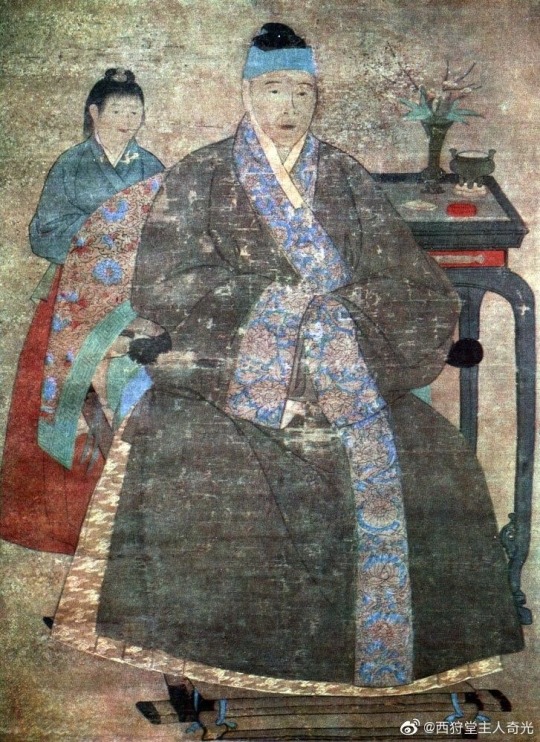
Portrait of the wife of a dignitary with maid by Chow Ying. Scroll. Painting on silk. 16th century. Moscow State Museum of Oriental Art [image source].

Portrait of Father Zhang Jimin and Mother Zhao. Unknown artist. Ming or Qing dynasty, Late Ming or early Qing dynasty (17th century or later). Hanging scroll. Ink and colors on silk. Arthur M. Sackler Gallery. National Museum of Asian Art, Smithsonian Institution [image source].

Ancestor Portrait of a Court Lady. Possibly Ming Dynasty. Unknown artist. Hanging scroll (laid down on panel), ink and color on silk. The Nelson-Atkins Museum of Art [image source].
Notice how, even the maid in the background above, has 左衽.

Possible Portrait of Ancestor with maid. Unknown Artist. Possibly Ming Dynasty [image source].
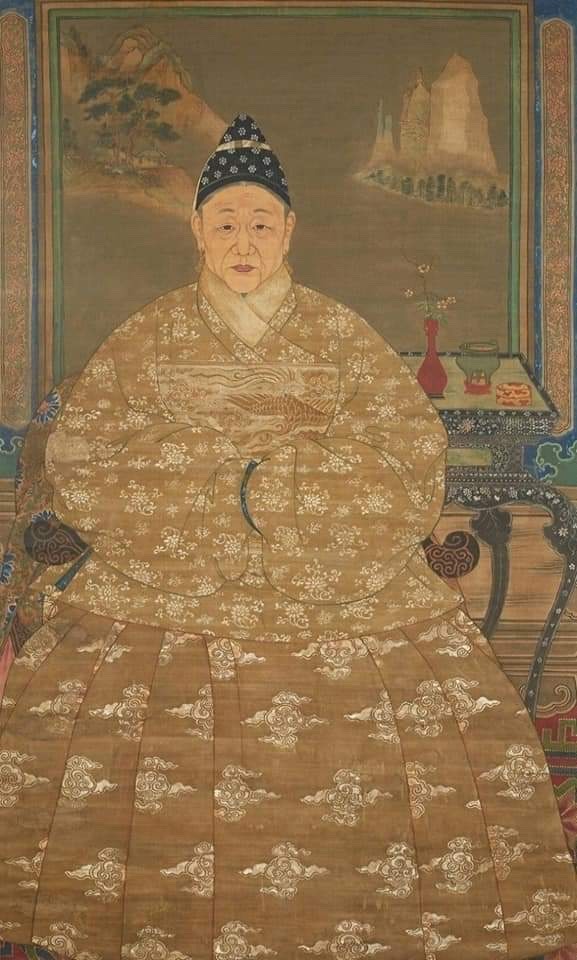
Ancestor Portrait. Unknown artist. Late 19th century. Qing Dynasty. Auguttes Auction House. [image source].
Note: Be careful when dating ancestor portraits. Many were painted posthumously and could depict ancestors from multiple previous generations. Just because the figures are seen wearing a dynasty’s distinctive clothing, does not necessarily mean that it was painted then. Some Qing Dynasty ancestor portraits depict ancestors from the Ming Dynasty and, thus, artists painted the figures with Ming clothing.
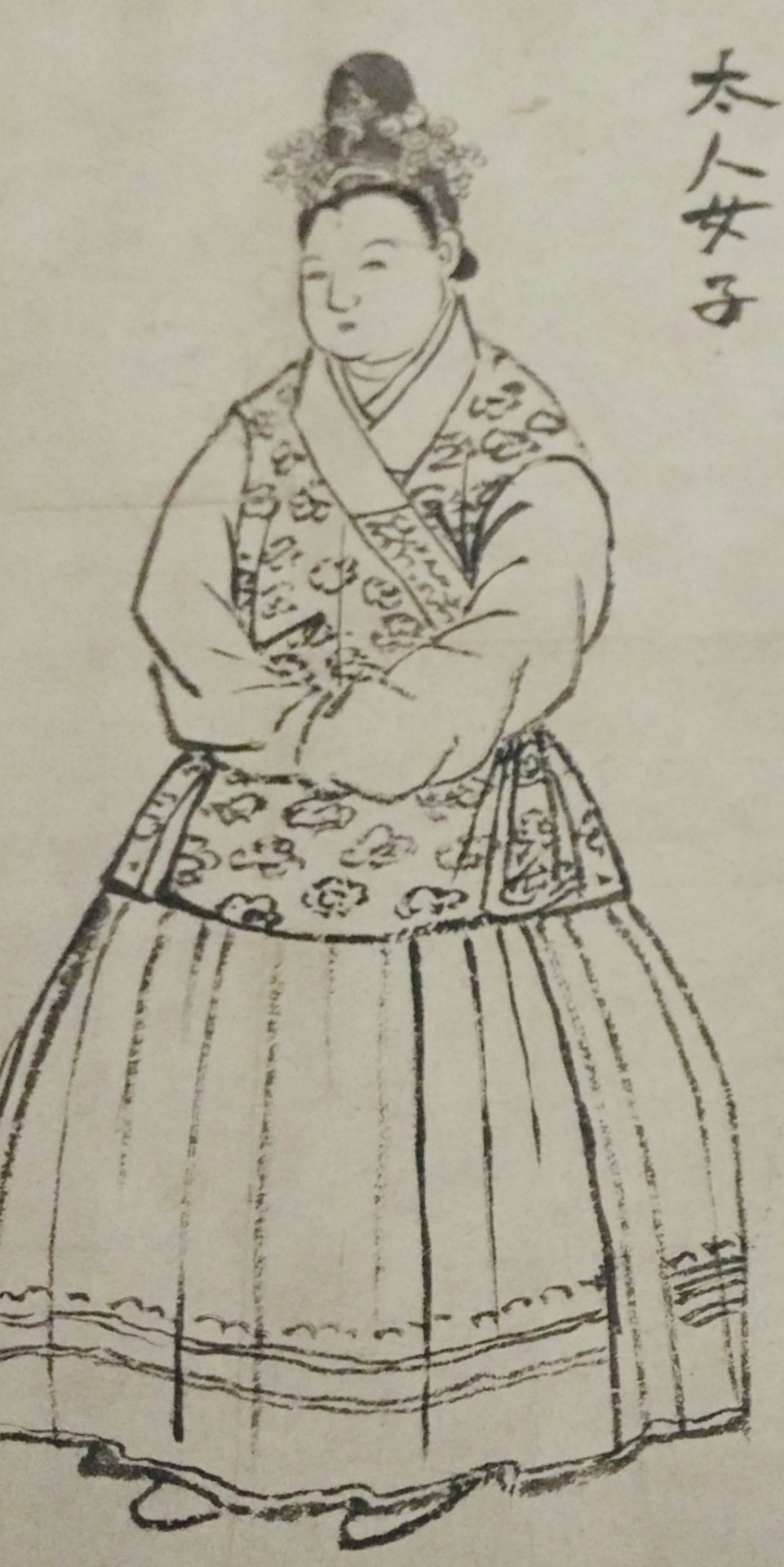

Images portraying hanfu in the Ming Dynasty with 左衽 drawn by Sesshu Toyo (1420 - 1506 CE), a Japanese monk who visited China between 1467 to 1469. Ink on paper [image source].
More portraits with 左衽 and modern recreation:
#chinese history#chinese culture#ming dynasty#ancestor portraits#右左衽#hanfu#ming paintings#ming portraits
128 notes
·
View notes
Note
🔥(unpopular Chinese history opinion?)
oh man lol I feel like different circles have such differing views on it I don't even know
unpopular among china scholars/sinologists
not everything is communist propaganda
china was not founded in 1949
not everything is propaganda
century of humiliation is a real thing that people suffered through for generations, it's not made up
propaganda usually works because it has its roots in reality and appeals to real suffering and discontent in people. acting like anything the government promotes is automatically a product of brainwashing and a victim complex and delusion is ridiculous
unpopular among general 'basic knowledge' crowd
Pre-modern China was NOT!! NOT NOT static at ALL!!!!!!!!!! I have no idea how this intensely racist impression from the 1800s has lasted to this day. I get that many China scholars focus on a small timeframe or only modern day, but China's culture and society were constantly changing moving growing etc. the very concept of 'traditional' is potentially ambiguous. From values to religion to philosophy to language to gender expectations and relations, everything changed all the time! Confucious was not the only philosopher there were many rising and falling over the years, Legalism Daoism Mohism etc. The role and rights of women also changed a lot depending on the dynasty, it's commonly known that Tang dynasty was a high point in women's rights (and also a time when muscular men and fat women were more popular than their slender scholar/maiden counterparts) and that the following Song dynasty saw a backlash that made women's rights even worse than before the Tang (this was the birth of foot binding) but the role and concept of genders were constantly in flux other times as well.
unpopular among dudebros
how far the borders of a dynasty expanded isn't the defining factor of how great or worthwhile the dynasty was. Most openly expansionist and imperial dynasty =/= automatic greatest dynasty! I feel like this is a mentality born out of being overly obsessed with war and conquest and land gain as the be all end all of a civilization :/
that being said I do think Tang dynasty was incredible don't look at me
unpopular among those weird racists on reddit
China being conquered and ruled by foreigners isn't a 'gotcha' lmfao every nation was before, and China's invaders often assimilated themselves
unpopular among chauvinists
my earlier point notwithstanding, China still lost to a bunch of northern nomads/tribes and consistently over and over again throughout history lol even the great wall didn't keep us out
people need to stop pretending the different tribes around the borders didn't also have a lot of influence on the country and culture, everyone accepts the influence of other kingdoms and empires over the years but apparently being influenced by nomads and tribes is below them. suck it tf up
unpopular among militant red guard members from 1960
shanshui paintings and traditional culture are pretty cool actually
in general
if Yuan dynasty and Liao dynasty and Jin dynasty are legitimate dynasties so is Qing. Related: if Yuan dynasty clothing was Hanfu so is much of Qing dynasty women's clothing, the Manchu didn't change Han women's clothing
China is incredible and I love it very much yes and it's the birthplace of many great inventions and a huge regional power as well as constantly on the forefront of development for most of history, however, it's not like... necessarily unique in its existence? This goes both ways btw, it wasn't uniquely a victim or uniquely an aggressor, it's not uniquely evil or uniquely good. Like I find people either go 'people don't understand that it was a victim of imperialism and got conquered a bunch, everyone just wants to say its an aggressor' or 'people don't understand it was a major imperial power and conquered a bunch, everyone just wants to say its a victim' so on and so forth. Like, they're both true, and it's not unique as a victim (so was anyone else who fell victim to any expanding power in the west or anywhere else) nor is it unique as an aggressor (so was basically every other major and semi-major group in history that annexed surrounding land and went to war with other expanding powers over influence around them) and that doesn't take away from the importance or impacts of either and people should be able to discuss it but just like... context is important I guess. History is messier than people think and should be approached as such.
32 notes
·
View notes
Text
China Masterlist 🏮
Umbrella Terms
Huafu (any clothing originating in China)
Hanfu (Han-Chinese ethnic clothing)
Hanyuansu (western clothing inspired by hanfu)
Modified Hanfu
Wedding Hanfu
Winter Hanfu
~~
General Hanfu Terms
Men’s Hanfu
Mianfu (emperor’s clothes)
Dachang (male equivalent of a pifeng)
Yichang
Yuanlingpao
Qiyao Ruqun (Parallel Collar) (Crossed Collar)
Moxiong (undergarment for women)
Shan
~~
Han Dynasty + Wei/Jin Dynasties
Quju
Danyi (sheer coat for shenyi)
Shenyi
Zhiju
~~
Tang Dynasty
Daxiushan (lit. big sleeved shirt)
Banbi (Tang Dynasty beizi)
Banxiu
Tanling (U-collared shirt)
Qixiong Ruqun (chest-high ruqun)
Yaoqun
Heiziqun
Hezi
~~
Song Dynasty
Beizi (narrow-sleeved coat with slits on the side)
Beixin (sleeveless version of the beizi)
Moxiu (similar to a shan but the sleeves are wider and shorter)
Lanshan
Xiapei
Baidiequn
Song-style Pants
~~
Ming Dynasty
Pifeng (big sleeved coat)
Bijia (sleeveless version of a pifeng)
Zhaojia (male equivalent of a bijia)
Changshan
Zhuyao
Mamianqun (horse-faced skirt)
Aoqun
Zhiduo
Daopao
Tieli (pleats go around the skirt)
Yesa (no pleats at the front of the skirt)
Fengguan (phoenix crown)
Yunjian (shoulder accessory)
~~
Qing Dynasty
~~
Republican Era/Minguo
Qipao/Cheongsam
~~
Footwear
Zaoxue
Chixi
Fangxi
Qitoulv
Qiaotoulv
Yuntoujinlv
Tang-Style Astana Cemetery Raised Head Shoes
Tang-Style Astana Cemetery Shoes
Fanglv
Gongxie
Dengyunlv
Yunwa (socks)
~~
Makeup
Pearl Makeup
Huadian (forehead)
Xiehong (side of face)
Mianye (dimples)
~~
Musical Instruments
Guzheng
Pipa
Yueqin
Guqin
Dizi
~~
Other Clothing Tags
Qi Lolita
Qungua
Xiuhefu
Xiyu
~~
Other Tags
Chinese Opera
Beijing Opera
C-Drama
Guzhuang
Gufeng
6 notes
·
View notes
Text
All About Clothes
Traditional Style Clothes and Dress - Hanfu

Hanfu is the Mandarin word for traditional dress that originates from the Han Dynasty, which is before the Qing dynasty. These have been increasing in popularity as some cultural revival has been underway to stay connected to one's ancestors.
There are cultural differences between Chinese, Japanese, and Korean traditional garments. In China, the Hanfu is signified by a signature wrap technique - the left side is wrapped over the right one to make a Y-shaped neckline. They usually have a relaxed fit.
Business Dress Etiquette

Business dress etiquette is similar to the American business professional. China used to have a unisex business uniform that resembles a suit, but with Westernization of the eastern world, they have moved to more modern suits. Suits could also mean a modest skirt and blouse for women.
Street Style Chinese Fasion
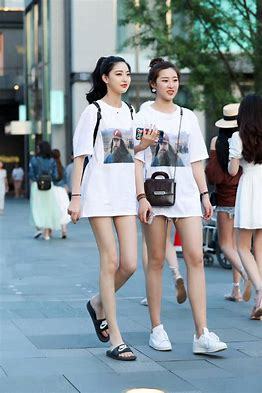
Chinese street fashion combines traditional patterns and elements into worldwide street style and current fashion trends. Fashion used to be used to determine social status, but now has evolved more into self-expression and identity.
Western fashion is a big influence on street style. This western influence is shown through fast-fashion brands exploding throughout the fashion landscape. Fast fashion brands are brands, such as Shein, that are typically made of the cheapest material with dubious labor methods (child labor :(.) (allegedly).
School Uniforms

The school uniform started as a way to unify the education system in China in the early 1900's. With the revolution for a more modern system, the instituted the uniform. They evolved from an attire involving a hat, large silk shirt, formal jacket, and skirt to what looks like a track suit now.
Since the new republic of China was instated (1950's), school children can be seen always wearing a red scarf around their neck. This signifies the Chinese history of being a 'young pioneer' for the emerging government.
Since the 1960's, the government then turned to an all-green outfit. This helped transition the children into the military. It also helped serve as another unifying thing in the culture.
-AL
0 notes
Text
Chosŏn Korea
從「尊明」到「奉清」 : 朝鮮王朝對清意識的嬗變 (1627-1910) = From "Honoring the Ming" to "Submitting to the Qing" : the transformation of Choson Korea's attitude towards Qing China, 1627-1910
Chapter 3 shows the popularity of Shrine for Lord Guan (Guanwang miao 關王廟) in Chosŏn and its relationship to Chosŏn’s efforts to consolidate its “Little China” identity. Koreans were introduced to the Chinese native religion of Lord Guan during the Imjin War in the 1590s, when Chinese troops of the Ming dynasty took Lord Guan, revered by the Chinese as legendary God of War, to Korea and built several shrines in his honor. At first, the Koreans were not interested in the imported cult, but in the postMing period the Koreans considered Lord Guan a good tool for propagating the message of loyalty. They viewed the shrines established by the Ming Chinese as perfect places and vehicles for commemorating the Ming and depreciating the Qing temporally, culturally, and psychologically. Those shrines to Lord Guan were thus closely connected with Chosŏn’s domestic activities honoring the Ming. From 1597 to the early twentieth century, Korea established twelve shrines to Lord Guan; in the eighteenth century, the image of Lord Guan was assimilated into Korean culture, or was Koreanized, indicating full acceptance of this Chinese native religion into Korean society. The chapter furnishes the literature of Sino-Korean studies with an excellent review of the history of shrines to Lord Guan in Chosŏn Korea and reveals the critical cultural and political messages behind Chosŏn’s endorsement of the shrines during the Qing period. In my opinion, it stands out as the best of the fourteen chapters. The chapter does not explain what happened to the shrines after the Japanese colonial period, but the postcolonial period is beyond the book’s scope.
, Da Ming qihao yu Xiao Zhonghua yishi: Chaoxian wangchao zun Zhou si Ming wenti yanjiu, 1637–1800 大明旗號與小中華意識: 朝鮮王朝尊周思明問題研究 (The Great Ming and the ideology of Little China: A study of the issue of revering the Zhou and honoring the Ming in Chosŏn Korea, 1637–1800).
화이론 (Hua Ei Ron), Hua–Yi distinction
It means respecting China and defeating barbarians, an idea that became the backbone of Joseon's foreign policy. Zonhwa Yang Theory and Zonju Theory.
[출처: 한국민족문화대백과사전(화이론 (Hua Ei Ron))]
Sojunghwa: The Korean word meaning “Little China.” Much like after the fall of Constantinople to the Latin Empire, the Bulgarians fashioned themselves as the heir to a greater civilization. In this East, the Koreans proclaimed themselves as the rightful inheritor of Chinese culture. This was due to the Han hegemony being toppled by the Barbaric Manchus.
Hanja: Korean Characters adopted from the Chinese “Hanzi.”
Zhongguo (middle kingdom, center of the world)
According to the History of the Three Kingdoms, Silla adopted the clothing and customs of the Tang dynasty as a way of transforming its people from "barbarians" into "Hwa" (華):
[...] Gim Chun-chu entered the Tang dynasty, requested for [the right to] adopt Tang customs. The Emperor Taizong [of Tang] issued an edict in approval and bestowed [upon Gim Chun-chu] clothes and belts. [Gim Chun-chu] thus returned [to Silla] and enforced [Tang clothing and customs], thereby transforming barbarians into Hwa. Four years into the reign of King Munmu [of Silla], the clothing [style] of women was once again adjusted. The clothing and headwear [of Silla] became the same as those of Jungguk ever since.[12]
In the Ten Articles for Instruction, the King Taejo of Goryeo expressed his wish for the Goryeo dynasty to follow the example of the Emperor Yao and highlighted the influence of the Tang dynasty on Korea:
[...] while succession to the throne by one's eldest legitimate issue should be the rule, Yao abdicated in favor of Shun, for Danzhu was unworthy [of the throne]; this was indeed putting the interests of the state [ahead of one's personal feelings]. If the eldest legitimate son is unworthy [of the throne], let the second eldest succeed to the throne; if the second eldest, too, is unworthy [of the throne], select the brother the people consider the best qualified for the throne.[13][14]
[...] we the Orient, for our admiration for the ways of the Tang dynasty, have emulated its writings, objects, rites and music.[15][16]
The King Injong of Goryeo once issued an edict that urged the Koreans to discard the ways of the Khitan "barbarians" in favor of Chinese traditions:
[...] replicate and follow the ways of Hwaha, forbid the traditions of the Khitan barbarians [...][17]
The Veritable Records of the Joseon Dynasty labelled Korea as "Sojunghwa" (小中華) and highlighted the relations between China and Korea:
Ever since Jizi arrived in the East, [his] enlightenment became widespread; males exhibited the qualities of martyrs, while females were chaste and upright; [hence Korea is] known in historiography as 'Sojunghwa'.[18]
"Ever since Jizi was enfeoffed, every [Korean] dynasty has been regarded as part of the realm [of China]. The Han dynasty established four commanderies [on the Korean Peninsula], while the Tang dynasty established an additional Fuyu Commandery. During the [extant] Ming dynasty, all eight provinces [of the Joseon dynasty] are placed under [the administration of] Liaodong; all [Joseon] clothing, headwear, writings and objects follow the style of Hwa; [the Ming dynasty] conferred upon the [Joseon] king a seal, appointing him [the responsibility of] governance [...][19]
The court-commissioned Comprehensive Mirror of the Eastern State by Seo Geo-jeong highlighted the Chinese influence on Korea:
All [Joseon] clothing and institutions mirror that of Jungguk, thus [the Joseon dynasty] is known as 'the state of poetry, books, rites and music', and 'the state of benevolence and righteousness'; these were introduced by Jizi, so how could these be untrue![20]
In the 17th century, when the Manchu-led Qing dynasty replaced the Han-led Ming dynasty as the ruling dynasty of China proper, the Joseon dynasty believed that the Qing dynasty was unworthy of succeeding the politico-cultural orthodoxy of "China". Instead, the Confucianist Joseon dynasty asserted itself as the legitimate heir to the Chinese civilization and termed itself "Little China".[1] In 2010, scholar Brian Reynolds Myers stated in reference to the move that:
[T]he national identities of literate Koreans and Chinese [were] mutually indistinguishable. Believing their civilization to have been founded by a Chinese sage in China's image, educated Koreans subscribed to a Confucian worldview that posited their country in a position of permanent subservience to the Middle Kingdom. Even when Korea isolated itself from the mainland in the seventeenth century, it did so in the conviction that it was guarding Chinese tradition better than the Chinese themselves.[21]
Korean Hanbok vs Chinese Hanfu
0 notes
Text
It's autumn and you're short of trousers!
It is very important to choose a fashionable and trendy trousers to make your autumn colorful and to have a 100% turnaround rate when you go out to the street.
During the Warring States period, Xinjiang trousers were introduced to the Central Plains because when Chinese soldiers fought against Xiongnu cavalry, the Chinese soldiers were often defeated. As a result, King Wu Ling of Zhao during the Warring States period argued that the Xiongnu in the West won by relying on trousers and war horses and won by being flexible, while the Chinese wore long robes which limited the flexibility of their soldiers and lost by being too slow. The Xiongnu soldiers rode on horseback and were faster than the Chinese soldiers. Therefore, King Wu Ling of Zhao ordered his soldiers to wear trousers and fight with horses, which is known in history as the Hu Sui Riding and Shooting. Although trousers were worn by the Chinese during the Warring States period, they were still not widely available and were generally only worn by military soldiers.
Later trousers circulated among the people. During the Han and Jin dynasties, the material, colour and form of trousers changed, such as brown and purple plain silk tube trousers, lantern trousers and wide-waisted leggings.
The Tang Dynasty was a period of prosperous ethnic exchange. In this environment, trousers took on many new styles. The Tang Dynasty was an extremely open dynasty and showed more exotic cultural characteristics in the form of trousers. Shorts were all the rage at the time, influenced by the Hu clothing of the northern ethnic minorities. Men, women, young and old, the upper nobility and the lower commoners all enjoyed casual wear. During the Ming and Qing dynasties, clothing was different from before due to differences in social productivity and people's habits. The upper class wore robes and coats, while ordinary people wore trousers. It was convenient for those who needed to do farm work. Sometimes they tied their trouser legs above their knees with string or cloth so that they could work more easily.
Trouser suits are a necessity of life and in recent times they have become more and more diverse as world cultures have interacted. Trousers have evolved over a long period of time. In fact, any clothing we wear has evolved and developed over a long period of time to become what it is today. Discovering and studying ancient trousers helps us to understand the development of human history.
I think most elements that become popular must have a reason for being there. I personally feel that jeans are fashionable not only because of the ideas and zeitgeist they represent, but also because of their versatility.
Many of us have a pair of jeans in our cupboards because they represent our idea of freedom and youth. If jeans are a classic trend that never goes out of fashion, then ripped jeans have started a new trend in the fashion world. How to wear a stylish and good looking pair of ripped jeans, then I share with you a very handsome pair of ripped jeans:


I have a little story to share with you. A friend was sitting there and when I saw she was frustrated, I asked her what was wrong. She said she had bought a white short sleeve and wanted to wear it with a pair of trousers but didn't know how to choose, so I found her a pair of jeans like this (pictured below) and she thought they were great because they were comfortable to wear, didn't have that tight feeling of jeans and the thin version was easy to match.


Here's another casual straight leg pant that you can't go wrong with how you wear it, a must for lazy people.


Do you still like today's recommendations, if you do click on the link and you can buy it, if not you can go to our shop and pick your favourite, there is a wide range in the shop, hope you have a great day!
0 notes
Photo








#Qibghannu#Qing Dynasty#Han women’s clothing of the Qing dynasty#Chinese Fashion#Chinese Inspired#Fashion
153 notes
·
View notes
Note
What do you think about the Qing Dynasty outfit compared to the previous dynasties ?
Hi, thanks for the question! (x)
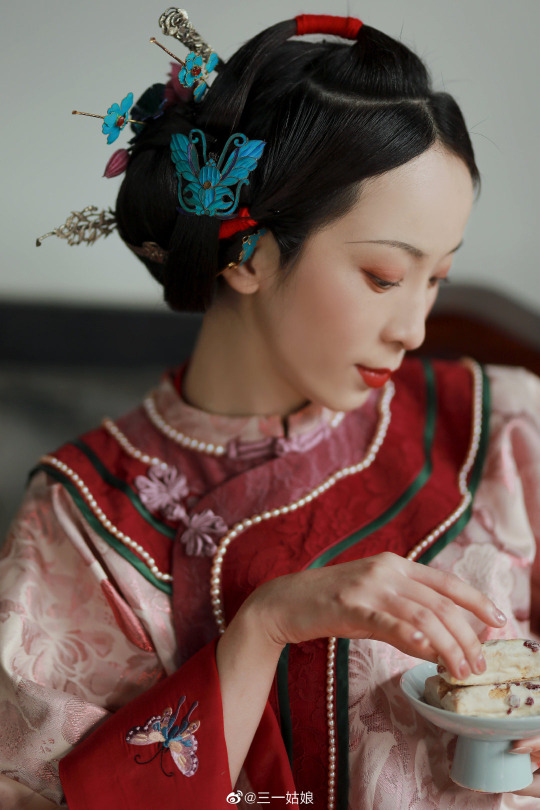
So, it’s really interesting because I received this ask a looong time ago (literally years ago) and I only got around to answering it now (sorry!), and my answer back then would’ve been different to my answer now.
If I had answered this ask back when I first received it -- I would’ve said that Qing dynasty (1644-1912) fashion wasn’t within my scope of interest from an aesthetic, cultural, or historic perspective, and left it at that. But that’s changed now that I’ve learned more about Qing dynasty fashion and realized how little I knew back then.
For example, back then my exposure to Qing dynasty fashion was limited to Qing court dramas, and thus my image of Qing fashion was mainly Manchu court fashion. I was not aware that: 1) The court wore different clothes from the common people, and 2) Manchu and Han women wore different styles of clothing (Manchu women wore one-piece robes, Han women wore two-piece garments). I bought into the idea that fashion suddenly changed overnight when the Qing dynasty was created, when in fact it was a gradual process, like all changes in fashion. My image of Qing dynasty fashion was firmly stuck in the latter half of the 19th century, and I didn’t realize that different years had different trends. And my reluctance to educate myself on Qing fashion stemmed in large part from my generally neutral-to-negative impression of the Qing dynasty (relative to previous dynasties) that, in retrospect, was mainly due to harmful Orientalist narratives of history that I believed without a second thought.
Below - Manchu women's one-piece robe (left) & Han women's two-piece garment (right):

As I picked up information and read more over the years, I’ve come to realize my own close-mindedness regarding Qing fashion (and the Qing dynasty in general). Big shout out to @audreydoeskaren in particular, her writings have been instrumental in challenging my long-held preconceived assumptions, misunderstandings, and prejudices about Qing fashion. Even though I prefer the fashions & aesthetics of previous dynasties (and my focus will always be there), the more I’ve learned the more I’ve also come to appreciate the garments, aesthetics, trends, and craft of Qing fashion. And on a more personal note - this is, after all, what my ancestors wore for close to 300 years. That fact alone should make it worth my consideration, study, and appreciation.
Below are some Qing dynasty-style outfits that I find appealing. I think it’s cool to see that along with hanfu, people are also reviving other styles of historical Chinese clothing, including Qing dynasty fashion (1/2/3/4/5/6):



If you like Qing dynasty fashion and are interested in dressing in that style, I recommend the following Taobao shops - they have lots of well-made Qing dynasty-style clothes:
1. 溪山亭/Xi Shan Ting

2. 兰衫逸/Lan Shan Yi

3. 河屿/He Yu

4. 言欣坊/Yan Xin Fang

5. 花神妙/Hua Shen Miao

6. 川黛/Chuan Dai
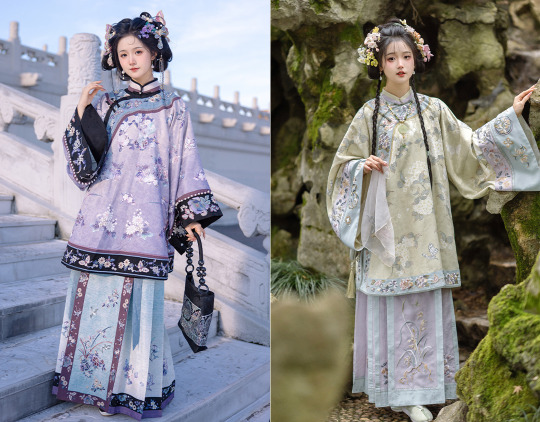
For more information, please check out my “Qing dynasty” tag.
Hope this helps! ^^
#personal#Qing Dynasty#Han women’s clothing of the Qing dynasty#清汉女装#not hanfu#history#reference#manchu fashion#taobao#recs#>100#溪山亭#兰衫逸#河屿#言欣坊#花神妙#川黛#ask#reply#milleniume#china#chinese fashion#chinese clothing#chinese culture
399 notes
·
View notes
Photo

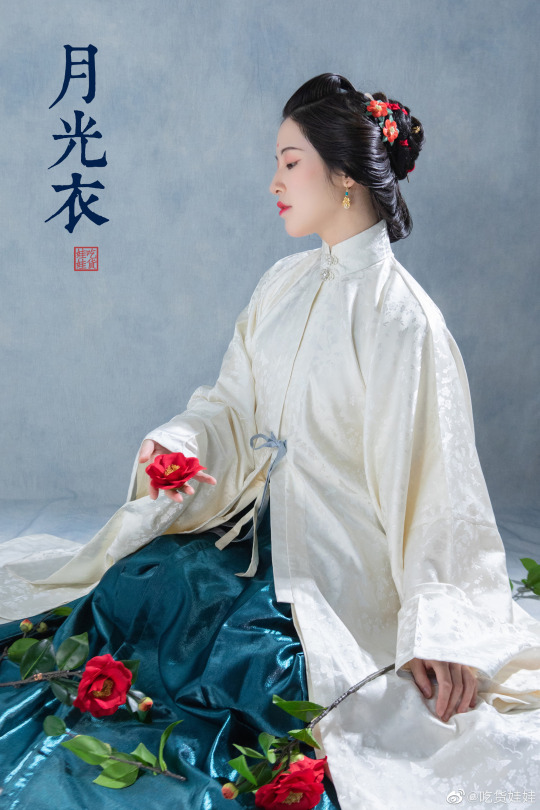

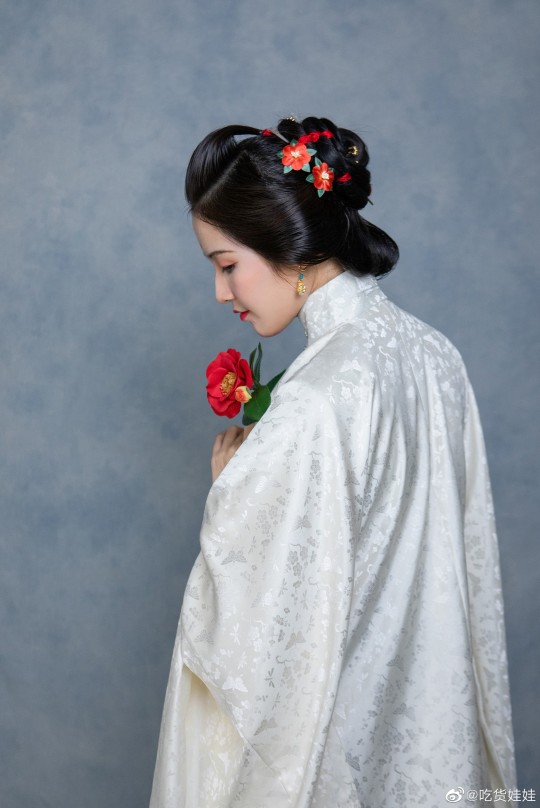
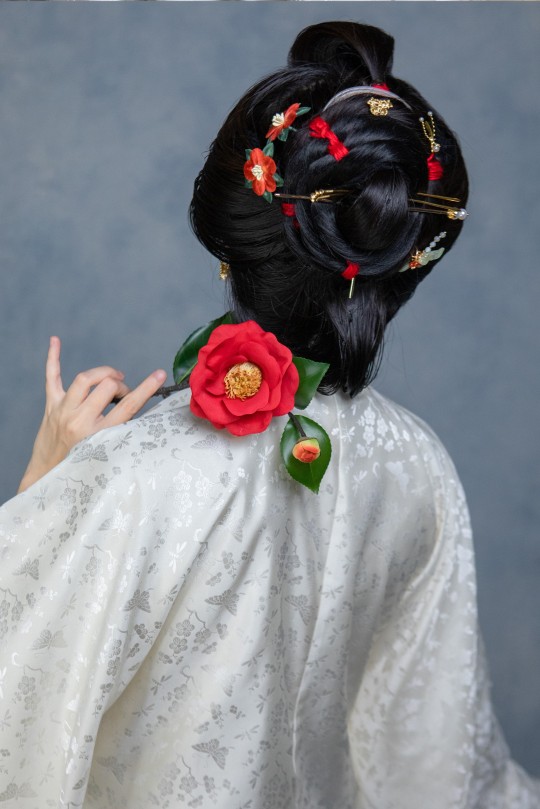
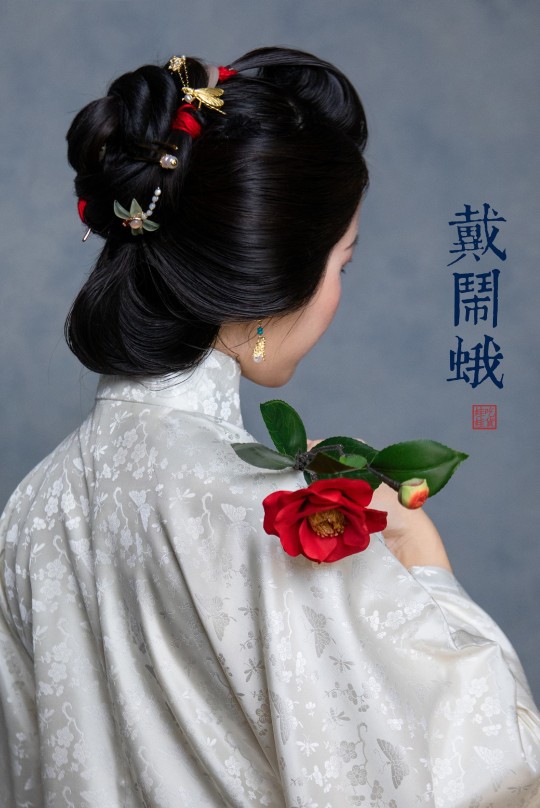




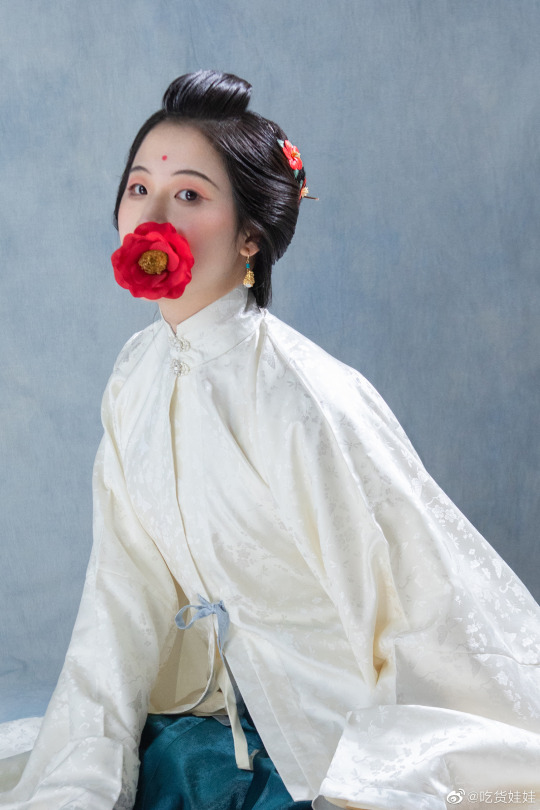

【Historical Artifacts Reference 】:
・Late Ming period woman hairstyle: 三绺头(Sān liǔ tóu )
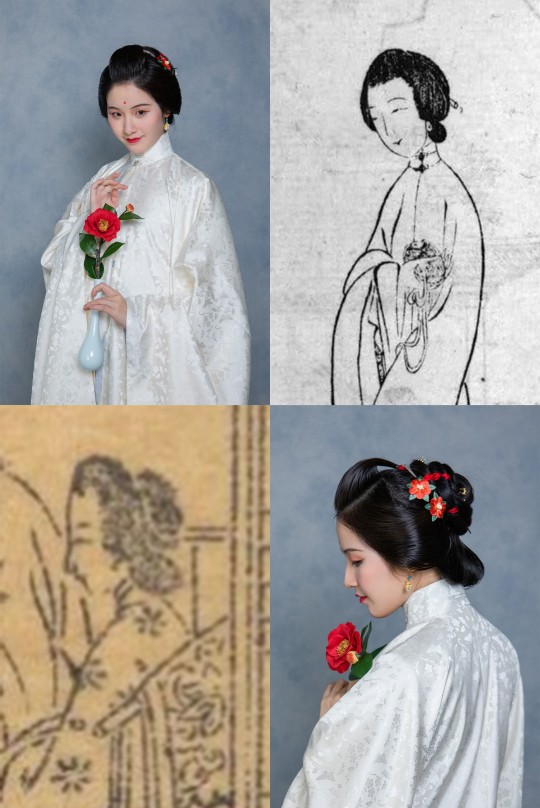
Late Ming to Qing Dynasty woman hood/hat: 风帽( Fēngmào )

[Hanfu · 漢服]Chinese Ming Dynasty (1368-1644 AD) Traditional Clothing Hanfu & Lantern Festival 元宵節
【About Lantern Festival/ Shangyuan Festival (元宵節/上元節)
Today is The Lantern Festival also called Shangyuan Festival (上元節), is a Chinese traditional festival celebrated on the fifteenth day of the first month in the lunisolar Chinese calendar, during the full moon. Usually falling in February or early March on the Gregorian calendar, it marks the final day of the traditional Chinese New Year celebrations.As early as the Western Han Dynasty (206 BC–AD 25), it had become a festival with great significance.
During the Lantern Festival, children go out at night carrying paper lanterns and solve riddles on the lanterns (猜燈謎). In ancient times, the lanterns were fairly simple, and only the emperor and noblemen had large ornate ones.As below Ming Dynasty court paintings【明宪宗元宵行乐图 】:

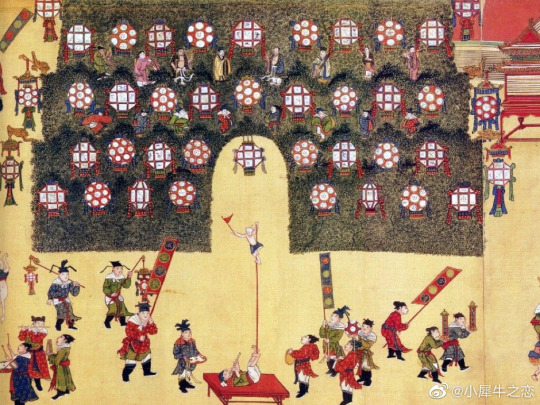
It depicts the lively scenes of watching lanterns, watching operas and setting off firecrackers in the inner court on the Lantern Festival in the 21st year of Chenghua (1485).Among them we can see a lot of large ornate lanterns in this painting
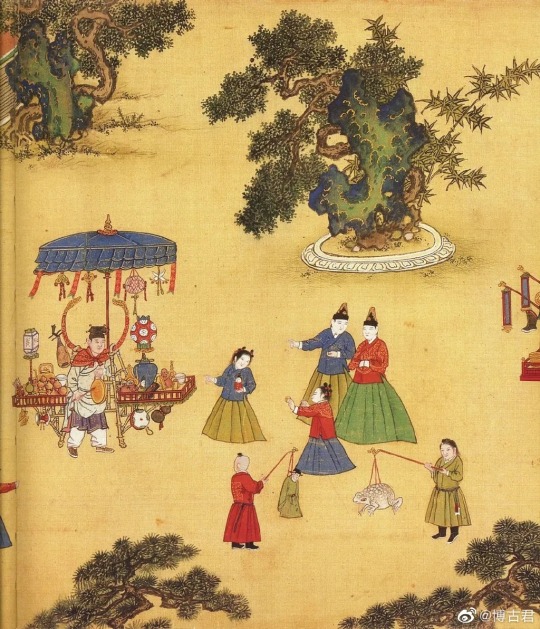


At the same time, we can also see the children in the palace carrying lanterns of various shapes

The painting is very long, and it is a custom painting reflecting the celebration of the Lantern Festival in the court of the Ming Dynasty.
【Customs of Lantern Festival in Ming and Qing Dynasties: 走百病 】
Also known as "游百病You Baibing", "散百病San Baibing", etc., it is a traditional folk culture in the north china since the Ming and Qing Dynasties. Some of them are held on the Lantern Festival, but most of them are held on the next day of the Lantern Festival.
On this day, women dressed in formal costumes, walked out of the house in groups, crossed bridges, climbed the tower over a city gate, and touch the nails on the city gate to pray for hopes of good health and longevity until midnight before going back home. Besides, touch the nails on the city gate it also pray for having child(摸钉求子)."Nail钉" are same pronunciation as Ding丁,It can be associated with the word "人丁Ren Ding": a Chinese word that originally refers to an adult man and later refers to the population.Basically, it is to pray for to have more and more family members in the future(child).

【Customs of Lantern Festival in Ming and Qing Dynasties: 戴闹蛾 】
The so-called“ 闹蛾 Nào é ”is a kind of headgear worn by women in ancient China, with silk or black gold paper in the shape of flowers or insects.It has been popular from Song Dynasty to Qing Dynasty.From some unearthed hair accessories in Ming Dynasty, we can also see a lot of insect-themed hair accessories, such as:
1. 玉叶金蟾头饰,Ming Dynasty:
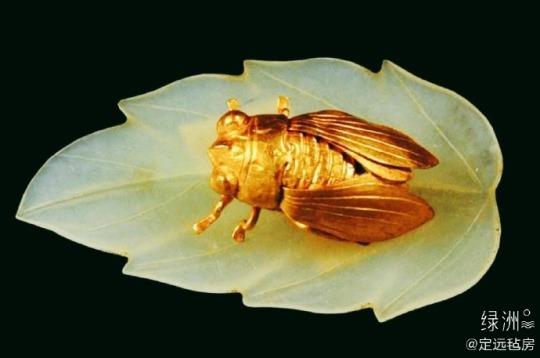
2. 金镶宝石蜘蛛簪,Ming Dynasty,Collection of Nanjing Museum

3.垒丝镶红蓝宝石蝴蝶形金步摇,Ming Dynasty,Collection of GuamfuMuseum

In addition, eating glutinous rice balls 汤圆 during the Lantern Festival is also a traditional customs in china,the practice and filling of glutinous rice balls in different regions may also be different.
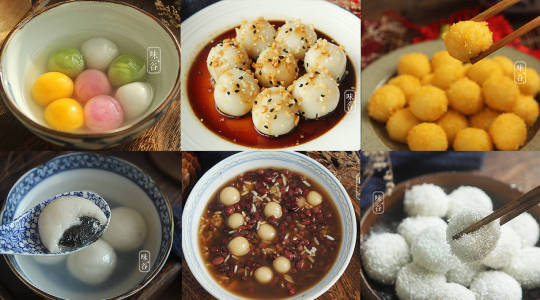
_______
Recreation Work :@吃货娃娃
🔗Weibo:https://weibo.com/1868003212/MrAg3zsiz
_______
#Chinese Hanfu#Ming Dynasty (1368-1644 AD)#hanfu#Lantern Festival/ Shangyuan Festival (元宵節/上元節)#chinese culture#chinese festival#风帽( Fēngmào )#三绺头(Sān liǔ tóu )#chinese food#chinese customs#走百病#明宪宗元宵行乐图#戴闹蛾#hanfu accessories#chinese traditional clothing#chinese#chinese historical hairstyle#Chinese Costume#吃货娃娃#China History
367 notes
·
View notes